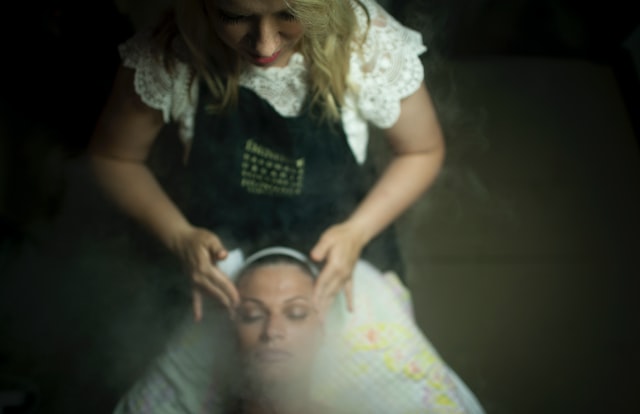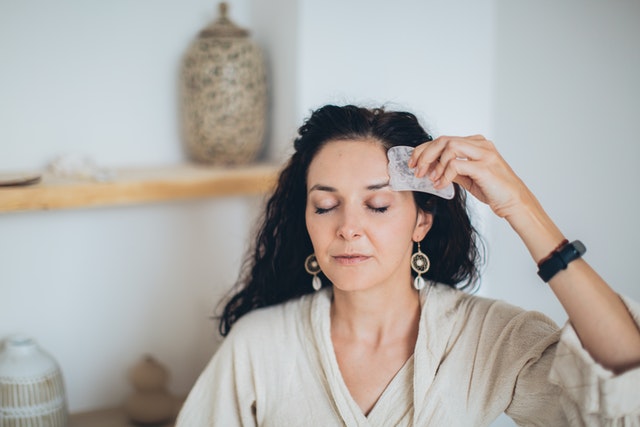
Strokes are usually caused by the decrease or blockage of blood supply to the brain, which can occur without any prior warning. Usually, the symptoms you’ll need to watch out for include headaches and numbness, to mention but a few. There are a few ways to mitigate the damage, and this post sheds light on facial exercises after a stroke that guarantees results.
According to the Center for Disease Control and Prevention (CDC), strokes are the fifth leading cause of death in the USA, as nearly 800,000 people have a stroke each year. Strokes can also cause short and long-term disabilities, depending on how quickly the affected individual gets medical attention.
After a stroke, patients may find it challenging to produce facial expressions, like smiling and displaying emotions, due to weak facial muscles, which is later diagnosed as facial paralysis or Bell’s palsy.
What is Facial Paralysis?

Facial paralysis occurs due to damage to the nerve cells controlling facial movement. Because of this damage, the muscles can become atrophied, causing some parts of the face to droop. Paralysis of this sort makes speaking, expressing facial emotions, and moving the face difficult. As a result, facial exercises are recommended in post-stroke therapy to assist patients in regaining full or partial facial mobility. By practicing these exercises repeatedly, your brain learns to use different neural pathways to regain facial control.
NB: Though effective in helping you regain and improve your facial movements, not all these exercises will suit you. Discuss with your doctor to get the best recommended facial exercises for you to do after a stroke.
Facial Exercises Post-Stroke
Therapy is one of the treatment processes you’ll need to embark on after a stroke, and a significant part of therapy will involve facial exercises. When done repeatedly and regularly, these facial exercises will place you well on your way to total recovery.
Based on your therapist’s instructions, you can work on your exercises up to four times daily, with about 30 repetitions per exercise. Let’s take a quick look at some common facial exercises you can do after a stroke.
1. Facial Stumulation
Like you would in a regular gym, you need to perform some warmups before beginning your facial exercises. Preparing your muscles by stimulating them will help reduce discomfort and pain after your exercise. We recommend sitting in front of a mirror to monitor your movements.
For facial stimulation, you’ll need to attempt to move all parts of your face. Start by winking, wrinkling your nose, and moving your mouth from side to side. Remember to work slowly and gently. Don’t let it deter you if you notice that you have no control over some parts of your face. It’s a gradual process – you’ll need time before you regain total facial movement. If it proves to be too difficult, you can use your fingers to massage different parts of your face gently.
2. Smile and Laugh
After your facial warmup, try smiling. Smile without showing teeth, then show a little. Try to balance the muscle strength on both sides. Repeat the process until you can feel your face moving.
You can also think about a good memory that brings a wide grin to your face so that you can laugh. Laughing uses multiple muscles in the face, making it an excellent way to encourage nerve stimulation and help improve blood circulation to the face.
3. Eyebrow Exercises
Eyebrow exercises are great for stimulating muscles around your forehead. The process is simple. Raise and lower your brows in a slow and steady rhythm. After doing this, keep your eyebrows raised (you can use your fingers) for 10-15 seconds before lowering them. Repeat this process up to 3 times.
Next, wrinkle your forehead and use your fingertips to make firms strokes on your brows, rubbing them up to the hairline. Keep your face in a frowning state, and try lowering the eyebrows. These exercises will help improve movement and blood circulation to your forehead and eyes. Do these for a few minutes two times a day, increasing your repetitions slowly.
4. Eye Exercises
After a stroke, patients might find it difficult to close their eyes, causing difficulty sleeping. These exercises can help you regain control of your eye muscles. Slowly squint your eyes as though you are staring at the sun. Next, look downwards without bending your neck. The idea is to pretend that you’re peeking at something on the floor.
You can also use your fingers to stretch out your eyelids. Place the back of your index finger on your closed eyelid, and with your thumb as an anchor, stretch your eyelid upwards. This exercise helps relax your eyes and prevents the muscles around them from getting too stiff. Winking is also practical here; wink with one eye and gently alternate with the other. However, note that you must stop if you notice any inappropriate muscle movements.
5. Nose and Cheek Exercises
Your nose and cheeks are important parts of your face, so you must pay special attention. If the muscles in this area are weak, they can affect the strength of your entire face.
The first step for this kind of exercise is to wrinkle your nose. Think about a bad smell, like when you broke a rotten egg. If your nose isn’t moving, you can help by using your hand to push your nose upward.
Nose and cheek exercises will need you to make a lot of weird faces, so try to have a bit of fun as you go. Flare your nostrils and try to maintain that position for a few seconds. Breathe deeply through your nose before flaring your nostrils. Great news if a part of your face hasn’t been affected by the stroke. Now, try to cover the unaffected part of your face so the muscles in the affected places can do their work without any interference. Repeat these exercises several times throughout your day.
6. Mouth Exercises
Face paralysis can make it difficult to eat or drink. It’s also not uncommon to sometimes have some dribble leak out of your mouth, significantly when the stroke has affected the tongue. These exercises can help strengthen your mouth and jaw muscles, giving you better control of your facial movements.
Start by opening your mouth wide. Pretend to smile before closing your mouth. Practice frowning as well. Next, gently pucker your lips, place them in a position as though you’re about to whistle, and then relax. Finally, open your mouth wide but place your hands under your chin to restrain movement.
7. Jaw and Tongue Exercises
To strengthen your jaw and tongue muscles, try these exercises: Start by sticking out your tongue as far as possible and holding it for about five seconds before resting. Also, try retracting your tongue inside your mouth and keeping it at the roof of your mouth for three seconds before relaxing.
Next, stick out your tongue as far as you can and press down on it with the back of a spoon as you try to lift it. Finally, place a finger on your cheek about one inch from the corner of the mouth, and then push that finger with your tongue from the inside of the mouth. You can stretch your jaw by opening your mouth wide, moving your lower jaw left and right, and then moving it circular. You can repeat these motions ten times each, four times a day.
Benefits of Facial Exercises Post-Stroke
The big question is, do facial exercises work? The answer is yes. Studies have shown that these face workouts can help improve the functionality of the face and can assist patients in restoring some of their lost function. These recommended exercises will play a crucial part in your recovery from facial paralysis and, when done right, will lead you to a faster recovery.
Conclusion
While performing facial exercises, you must be as gentle as possible. Chew your food using both sides of the mouth to retain the natural pattern of your muscles.
The exercises we’ve listed are safe and straightforward. Ensure that you don’t overexert your muscles. If your muscles feel stressed, try to relax. Don’t rush the process. You’ll recover faster than you think.